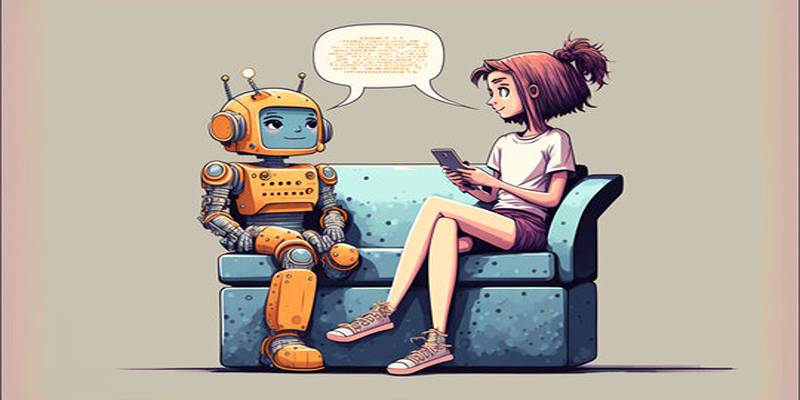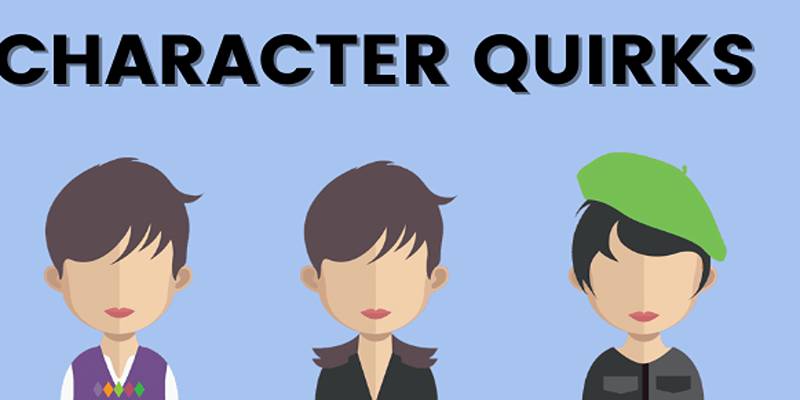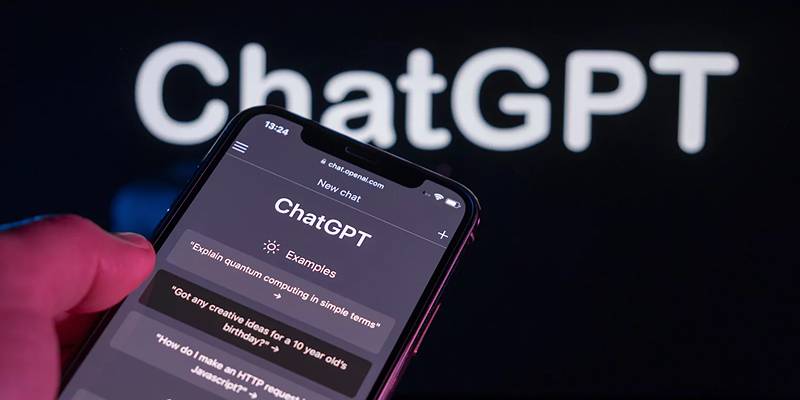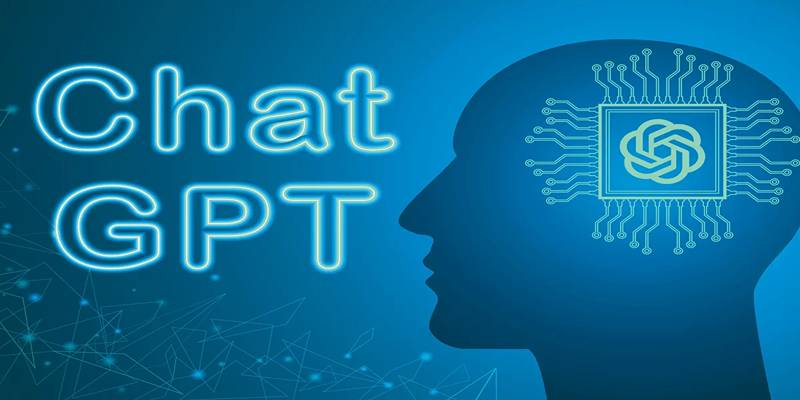Advertisement
Every memorable book begins with characters that feel real, layered, and emotionally resonant. Whether a story revolves around a single protagonist or a cast of multiple voices, character development is central to a reader's engagement. A well-crafted character is not just a role in a narrative; it’s the bridge between imagination and emotional connection.
With the rise of artificial intelligence in creative workspaces, tools like ChatGPT have become increasingly helpful in shaping fictional characters. While the author remains the creative driver, ChatGPT acts as a digital collaborator—offering structure, feedback, and inspiration.
Outlined below are 11 ways authors can use ChatGPT to develop fully realized characters that enhance their books' emotional and narrative power.
Names carry cultural, thematic, and emotional weight. Choosing the right one for a character often sets the tone for how readers will perceive them. ChatGPT can help authors brainstorm names that align with specific cultural backgrounds, time periods, professions, or personality traits.
Rather than relying on generic name generators, authors can define the character’s attributes and ask for tailored suggestions. It adds depth to the naming process and helps create identities that feel intentional and grounded within the story's context.
A believable physical description makes characters easier for readers to visualize and remember. However, consistency in these details across chapters can be challenging—especially in longer manuscripts. ChatGPT can assist by helping authors craft detailed, coherent physical descriptions that match the character’s environment, heritage, and role.
For stories set in unfamiliar settings or historical periods, ChatGPT can pull from its learned context to suggest appearance traits that make sense culturally or historically, allowing the author to maintain visual consistency.

Daily habits reveal more about a character than dramatic events ever could. A consistent routine—whether structured or chaotic—offers insight into personality, priorities, and emotional state. ChatGPT can assist writers in outlining what a day in the life looks like for any character, whether they’re a street vendor in a dystopian market or a noble scholar in a fantasy kingdom.
By mapping out morning rituals, work schedules, interactions, and end-of-day behavior, writers gain a clearer understanding of how a character fits into their world.
Characters don’t exist in a vacuum—their environments shape them. Clothing, body language, and even grooming habits often change depending on geography, climate, or societal structure. When an author needs help imagining how characters would live in a specific world, ChatGPT provides fashion logic based on environmental context.
This function is particularly useful in speculative fiction, where realism depends on small details. Clothing becomes more than decoration; it supports immersion and makes the fictional world more tangible.
Language is a powerful part of character design. It shapes how characters express themselves, interact with others, and reveal their backgrounds. ChatGPT can assist writers in assigning suitable languages or dialects based on setting, era, and cultural influence.
For authors working in historical fiction or building entire civilizations, having AI assistance in developing believable linguistic traits saves time and strengthens realism.
In multi-cultural or historical settings, writers may include characters who speak different languages. ChatGPT can assist by translating phrases or dialogue, allowing authors to include multilingual content while maintaining accuracy.
Although it’s always best to fact-check translations with native speakers, ChatGPT provides a solid starting point.
Character behavior must evolve naturally within a story. Dialogue and action should remain consistent with the character’s arc. ChatGPT can evaluate sample scenes and help determine whether a character’s choices and voice match the development outlined earlier in the manuscript.
This function helps identify logical inconsistencies or emotional dissonance. If something feels "off" about a character’s reaction, the AI can suggest why and offer solutions, helping the author refine tone and behavior across scenes.
Sometimes, authors develop characters unconsciously through scenes. A writer might wonder whether their protagonist appears brave, impulsive, or detached based on what they’ve written. ChatGPT can interpret a character’s traits through their dialogue, actions, and decisions.
This outside perspective helps authors ensure their character is coming across as intended. If there’s a mismatch between the author’s goals and the perceived personality, ChatGPT can guide revisions that align behavior with intent.

Distinctive quirks bring characters to life. Whether it’s a nervous tic, a philosophical catchphrase, or a ritual before battle, these small details enrich personality and increase relatability. ChatGPT is particularly effective at brainstorming quirks that feel natural to the character’s background and emotional journey.
Rather than adding quirks randomly, authors can explore traits that serve both story and psychology—deepening emotional resonance and reinforcing themes through character behavior.
Strong characters undergo change. Whether it's growth, loss, or internal transformation, the most memorable fictional personas experience a dynamic journey. ChatGPT supports this process by helping writers plan the stages of a character arc: introduction, conflict, development, climax, and resolution.
This structured approach keeps emotional progression logical and compelling. ChatGPT ensures that each plot point reflects a deeper character shift, avoiding stagnant or superficial development.
When a manuscript is well underway, it’s easy to lose track of all the traits and changes a character has undergone. ChatGPT can synthesize this information and create a comprehensive summary of a character’s role, journey, and emotional evolution.
This snapshot is valuable for authors during revisions. It highlights strengths, gaps, and redundancies—ensuring the character remains coherent from the first page to the final scene.
Developing characters is one of the most demanding aspects of writing fiction. It requires balancing personality, growth, dialogue, and realism—all while weaving them into the plot.
It doesn’t replace the imagination or voice of the writer, but it complements the creative process with structure, feedback, and inspiration. These 11 uses of ChatGPT show that AI can play a significant role in making characters more layered, believable, and impactful.

Learn how to prevent ChatGPT from saving your conversations by turning off chat history and managing privacy preferences.

Discover 9 smart ways ChatGPT makes life easier by helping with tasks, decisions, planning, writing, and daily learning.

Discover 11 effective ChatGPT strategies authors can use to create detailed, consistent, and dynamic book characters.

How the Amazon SageMaker Tool for MLOps simplifies building, deploying, and maintaining models. Learn how this managed machine learning platform supports end-to-end workflows and makes scaling easier for teams

Explore how ChatGPT helps fitness professionals save time by generating structured, personalized training programs.

Many users say ChatGPT feels less intelligent, but OpenAI insists the AI model is smarter and safer with every new update.

Learn how to install and use CodeGPT in Visual Studio Code to enhance coding efficiency and get AI-driven suggestions.

Discover 8 effective ChatGPT prompt strategies that help reduce digital distractions and improve daily focus and clarity.

Discover best practices freelance writers can follow to use ChatGPT ethically, creatively, and professionally in their work.

Explore how ChatGPT helps writers create powerful, creative poems by guiding tone, structure, and word choices.

Snowflake unveils new AI and security features to enhance machine learning, data protection, and scalability for businesses

Need to remove an image background in seconds? Learn how Erase.bg makes it quick and easy to clean up product photos, profile pictures, and more with no downloads required